Fine Dining Server Dress Code: Key Takeaways
- Fine dining Servers typically wear crisp white shirts, dark trousers or skirts, and polished shoes, with optional accessories like ties, vests or aprons to enhance a professional look.
- Grooming standards emphasize personal hygiene, neat hairstyles, short nails, and minimal or subtle makeup and jewelry to maintain a polished appearance.
- Certain items, such as visible tattoos, heavy makeup or flashy jewelry, should be avoided to keep the look subtle and elegant.
You’re probably here because you’re curious about what is the standard outfit for a Fine Dining Server. Well, you’ve come to the right place!
While there isn’t a one-size-fits-all rule, most fine dining establishments maintain a dress code that reflects their upscale atmosphere and high standards.
This guide covers key pieces, from clothing essentials to grooming tips, and is designed for both Servers who need to follow a dress code and the Restaurant Managers or employers who define the standards.
Fine Dining Server Dress Code: Clothing Essentials
A Fine Dining Server’s attire is carefully chosen to create a sleek and uniform appearance.
Here’s a closer look at each essential piece that Fine Dining Servers typically wear.
White button-down dress shirt
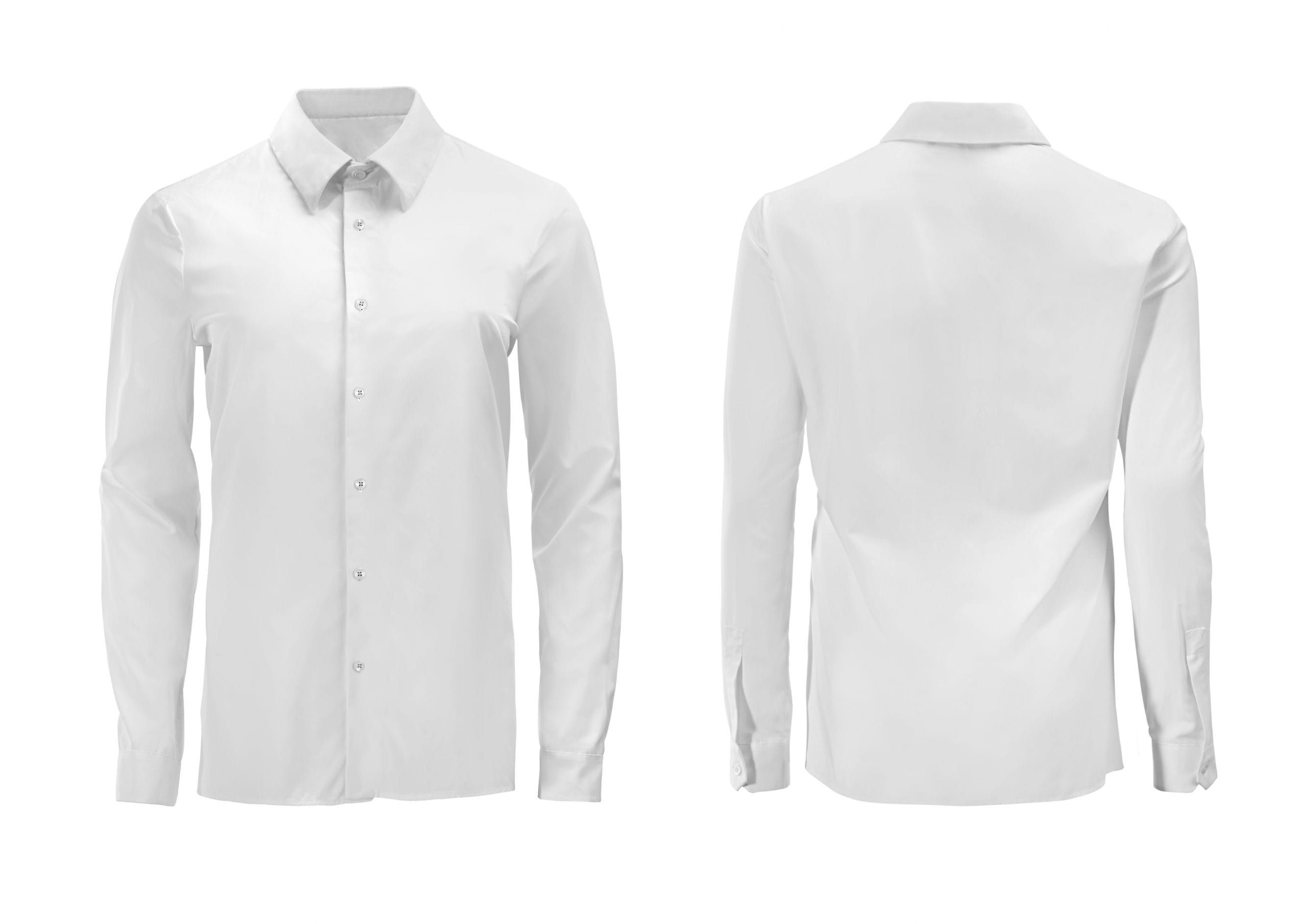
A crisp, white button-down dress shirt is a key component of many Fine Dining Server uniforms.
It should be made from high-quality materials like cotton or cotton blend that resists wrinkles.
Shirts made from lower-quality materials may lead to increased sweating and odors, making it harder for Servers to maintain a polished appearance throughout their shift.
The shirt should also be tailored to fit closely yet comfortably, allowing for easy movement without looking loose or baggy.
Its collar and cuffs need to be sharp and neat, showing no signs of wear, while the sleeves should fall right at the wrists.
Dress pants or skirt
A pair of dress pants or a skirt provide the necessary balance of comfort and professionalism for Servers in fine dining.

When it comes to pants, a straight or slightly tapered leg in a solid, dark color (like black or charcoal) is the way to go. This style offers a sophisticated look while allowing for freedom of movement.
The fabric should be both durable and breathable, ideally a blend of wool or high-quality polyester, to help Servers stay comfortable during demanding shifts.
Meanwhile, female Servers can also opt for a skirt. If this is the case, the skirt should be knee-length or slightly longer to maintain a modest yet stylish appearance.
Additionally, the skirt shouldn't be too tight, as tight-fitting styles can restrict movement.
Proper tailoring for both bottomwear options is essential, as it creates a sharp, polished silhouette that complements the restaurant's upscale atmosphere.
Vest
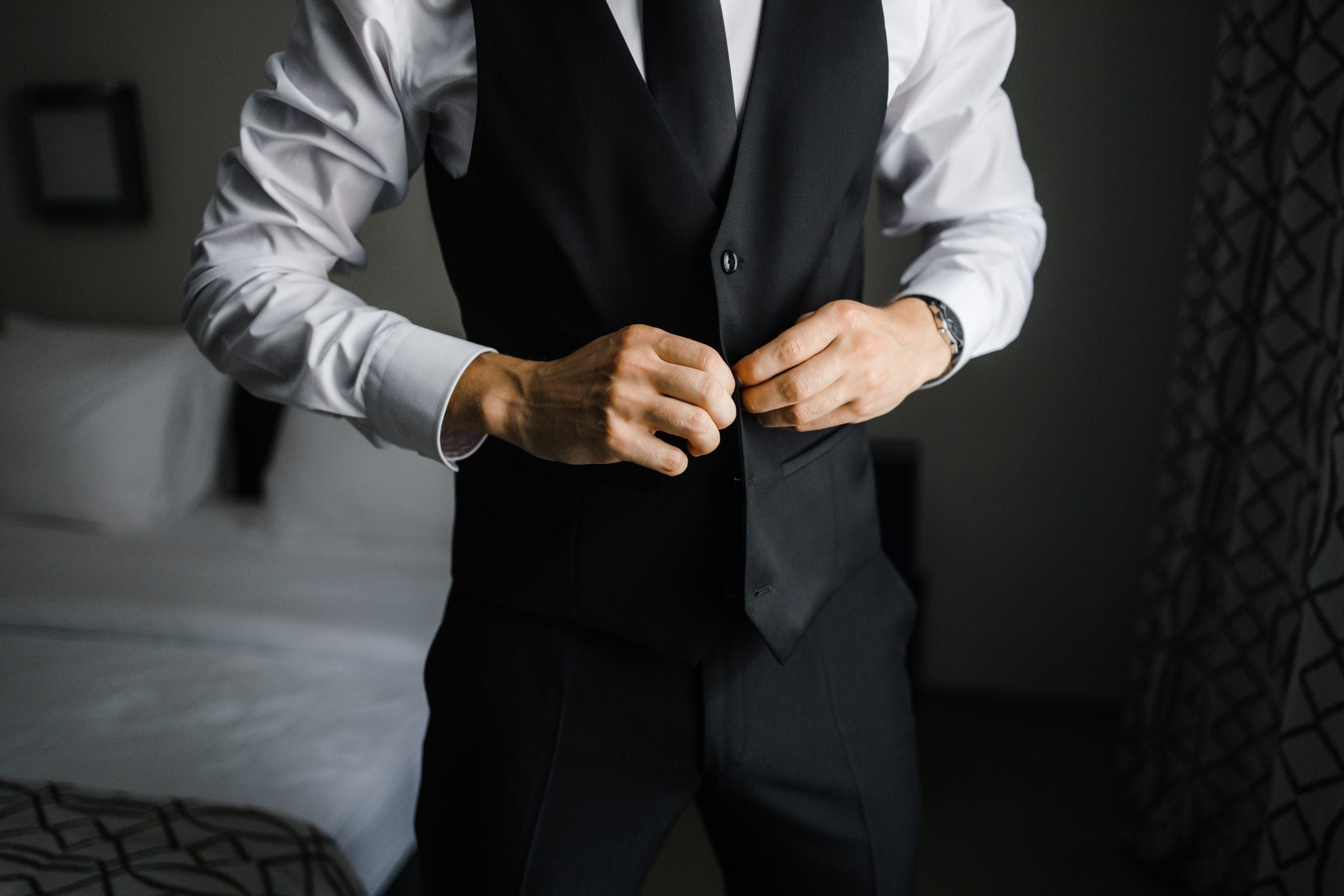
Adding a vest to a Fine Dining Server outfit brings an extra touch of elegance.
Generally, the vest should be black or a coordinating dark color that matches the rest of the attire. It should fit close to the body without being too tight.
As for the vest’s material, it should match or complement the pants or skirt, contributing to a unified look.
Buttons on the vest should remain fastened during service to maintain a polished appearance.
Bistro apron
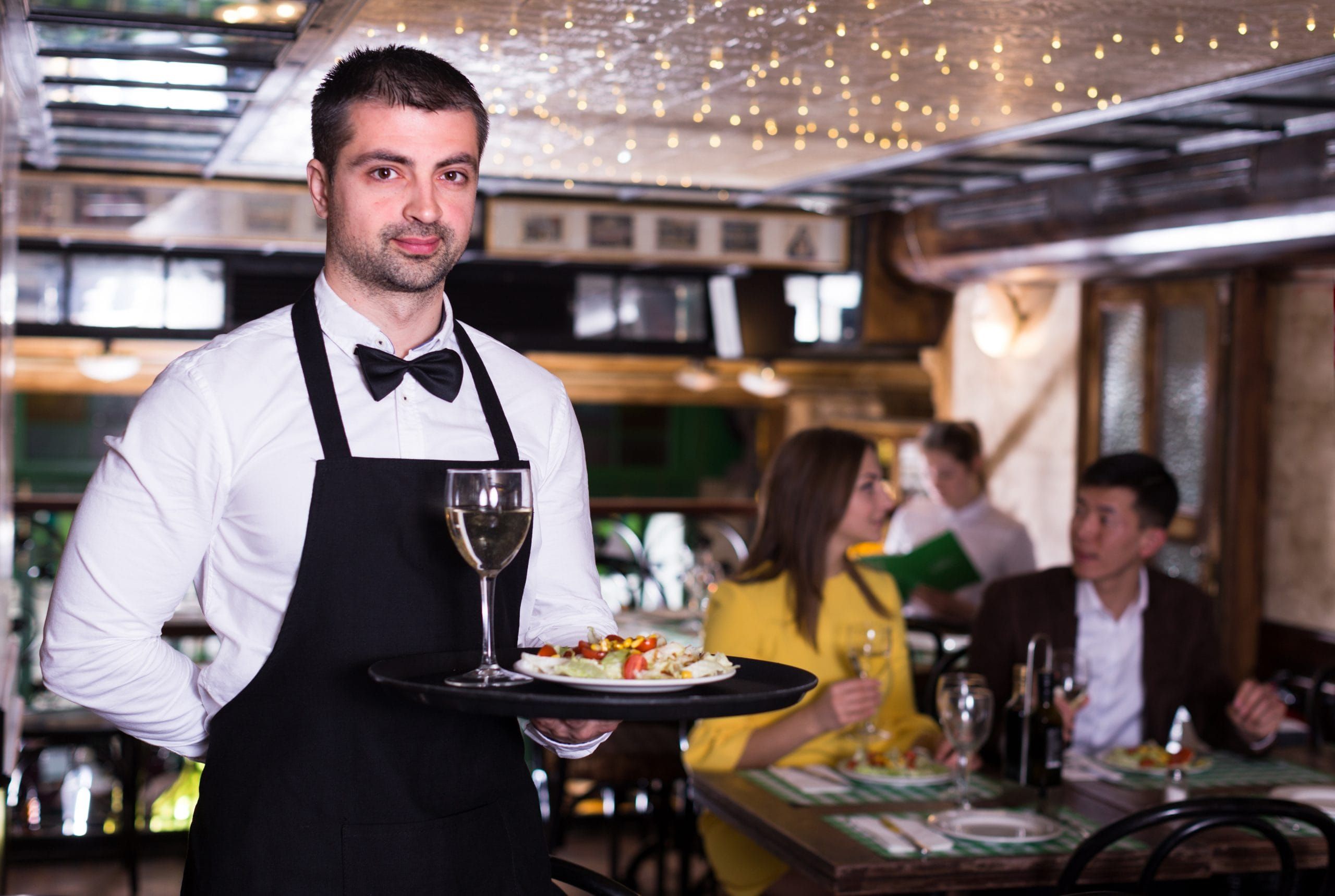
In some fine dining establishments, the bistro apron is chosen as an alternative to the vest for several reasons.
Firstly, aprons serve as a protective layer for clothing, shielding Servers from spills and stains that are common in food service.
Additionally, aprons can be produced in a one-size-fits-all design. This helps simplify inventory management and ensures that all staff members maintain a uniform look without the complications of fitting different sizes of vests.
Aprons for Fine Dining Servers are typically black, extending below the knee and fastening securely behind the neck and at the waist.
Tuxedo
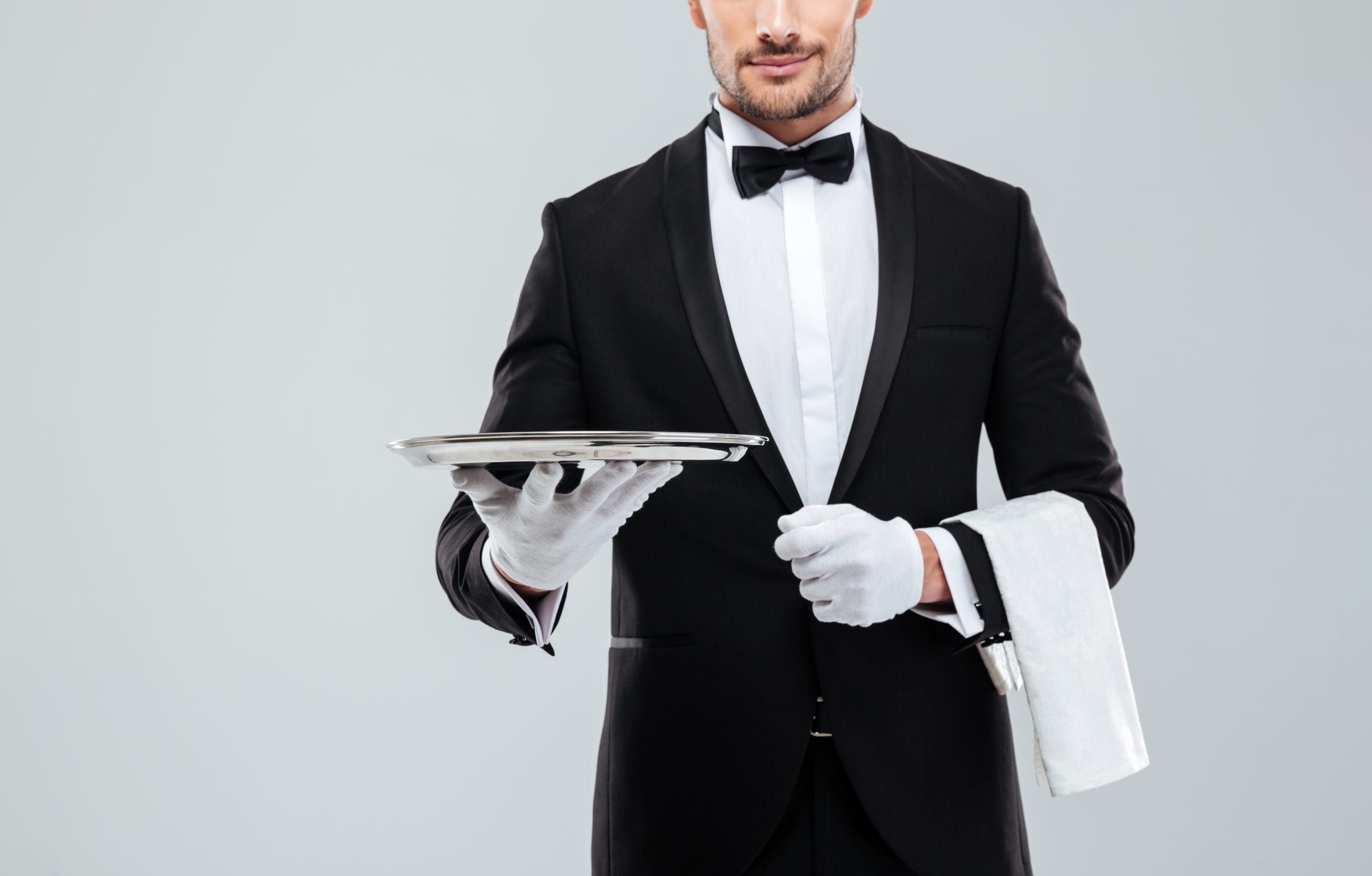
In some high-end fine dining settings, Servers wear tuxedos to convey the utmost formality. This is especially common in evening service or high-profile events.
The tuxedo typically includes a black jacket with satin lapels, a white dress shirt, a black bow tie and matching black dress pants.
Tailoring is crucial here, as an ill-fitted tuxedo can detract from the desired impression. The jacket sleeves should cover most of the shirt sleeves.
However, there should be enough length difference to allow a portion of the shirt cuff to remain visible; typically around 1/4 to 1/2 inch of the cuff peeking out from underneath the jacket sleeve.
Alternative: All-black outfit
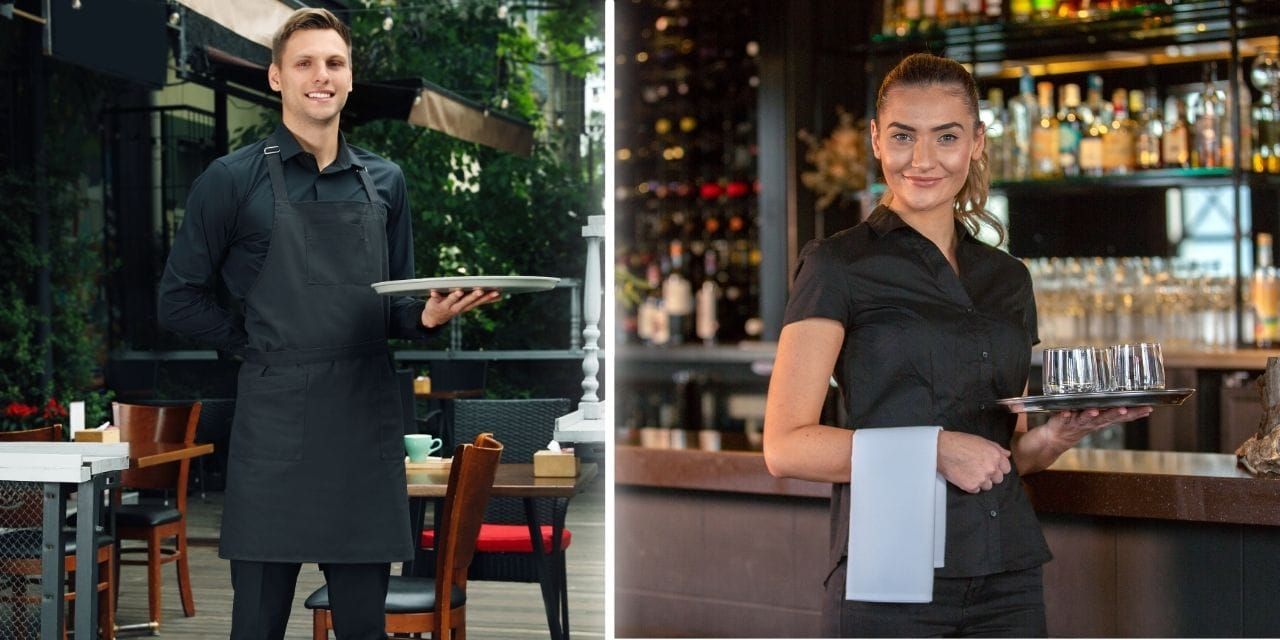
Some fine dining restaurants go for an all-black uniform instead of the classic black-and-white one.
This style has a modern, polished feel and is practical, as black hides minor stains.
Black uniforms can also enhance a restaurant’s ambiance, blending seamlessly with dim lighting and helping maintain an unintrusive presence in the dining room.
Shoes for Fine Dining Servers
Choosing the right footwear is essential for both style and comfort, as Servers spend hours on their feet.
Shoes should complement the formal look of the outfit and be practical enough for a busy service.
Men often wear black dress shoes with a polished leather finish, such as oxfords and brogues, which complement the attire’s elegance.
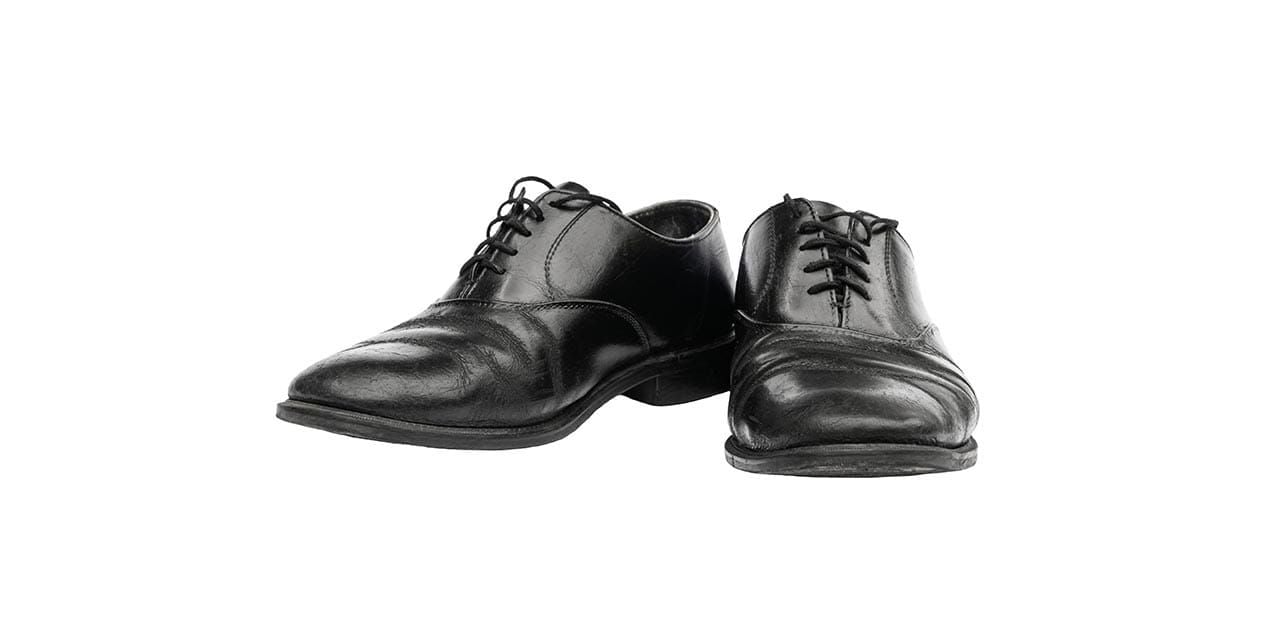
Women may wear low-heeled pumps, ballet flats or classic oxford shoes. This usually depends on their preference when it comes to comfort.
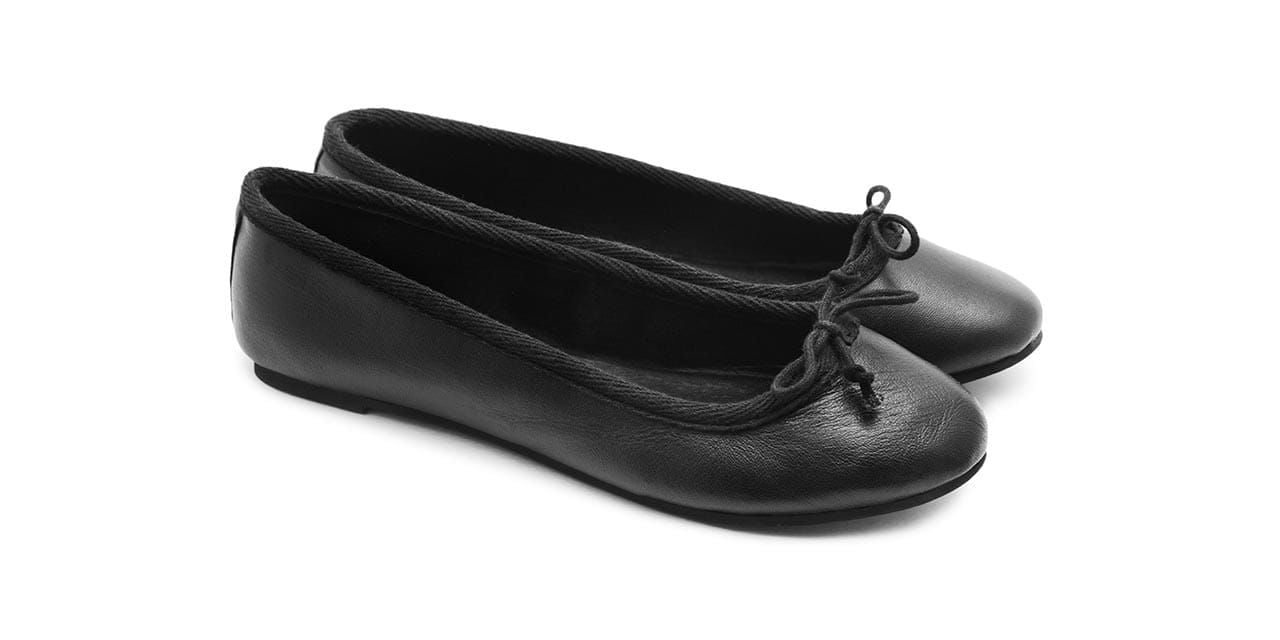
In all cases, non-slip soles are essential to ensure safety on potentially slippery restaurant floors.
Regular maintenance — including polishing and checking for any wear — is crucial, as well-kept shoes reflect the meticulousness expected in fine dining.
Accessories Suitable for a Fine Dining Server Dress Code
Accessories add a finishing touch but should be subtle, complementing the uniform without drawing attention.
Here are a few essential pieces often included:
Tie
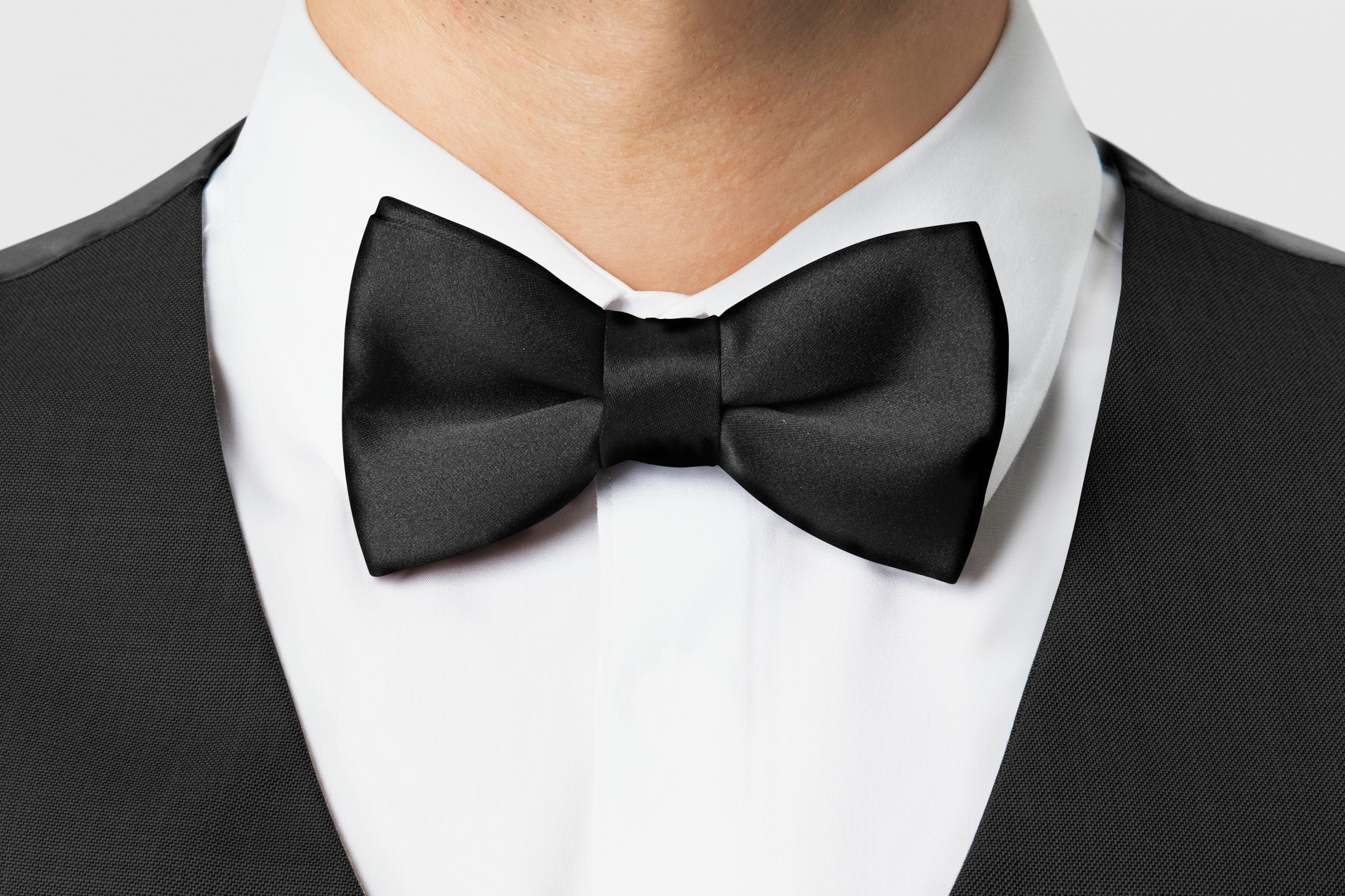
The majority of Fine Dining Servers wear either a bow tie or a classic necktie to enhance the formal look of their attire.
A black or dark-color tie complements the uniform best. It should be neatly tied and free from any stains or creases.
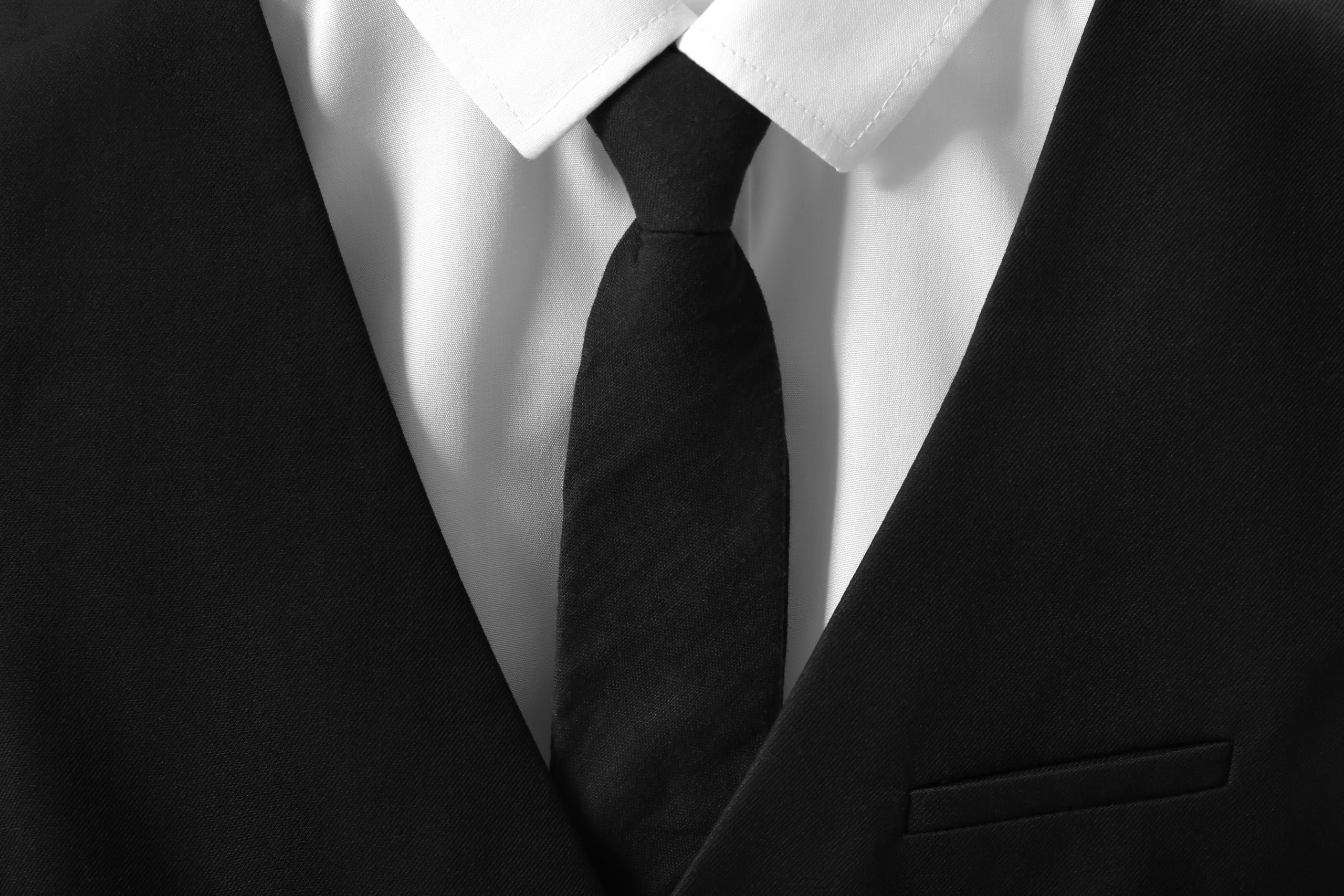
For neckties, a classic knot such as the Windsor or half-Windsor is typically preferred for a polished appearance.
As for colors on the tie, a single plain color is usually favored. Subtle prints may also be acceptable as long as they are not overly distracting or loud.
Black dress socks
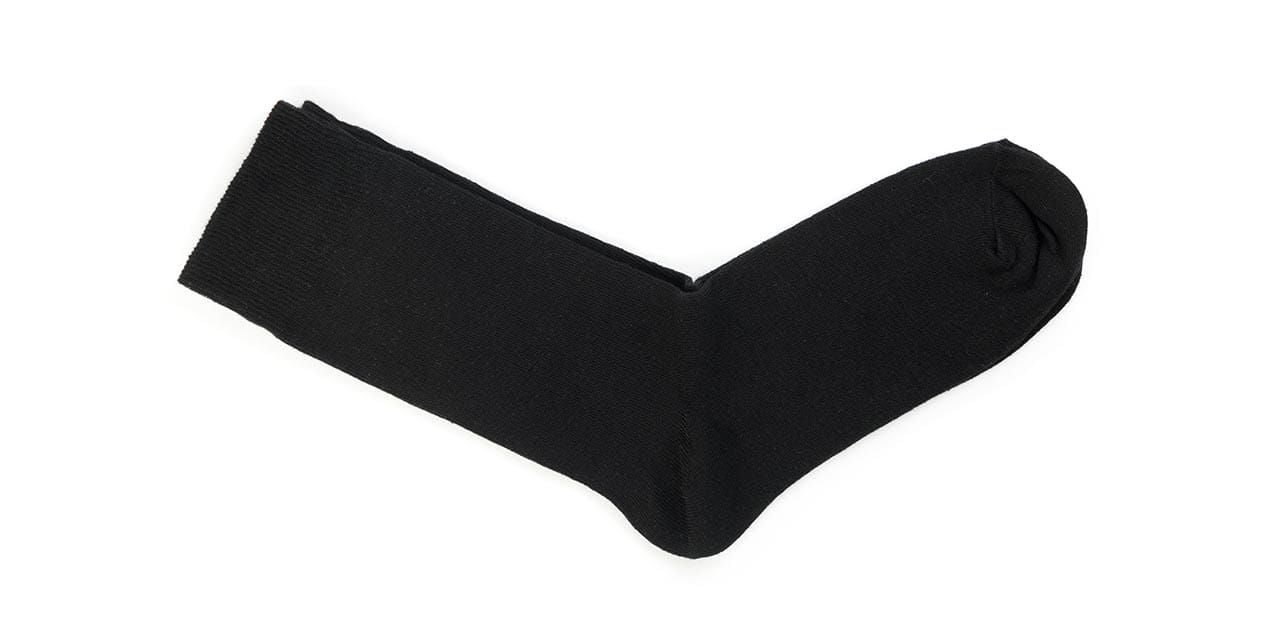
Black dress socks are a small but essential detail that helps create a seamless transition between pants and shoes.
This is especially the case if the Fine Dining Server dress code includes ankle-length pants.
The socks should rise high enough to avoid any gap (i.e., showing bare skin) when sitting or bending.
Women who opt for pants should follow similar standards, ensuring that the socks add to the cohesive look of the uniform.
White gloves
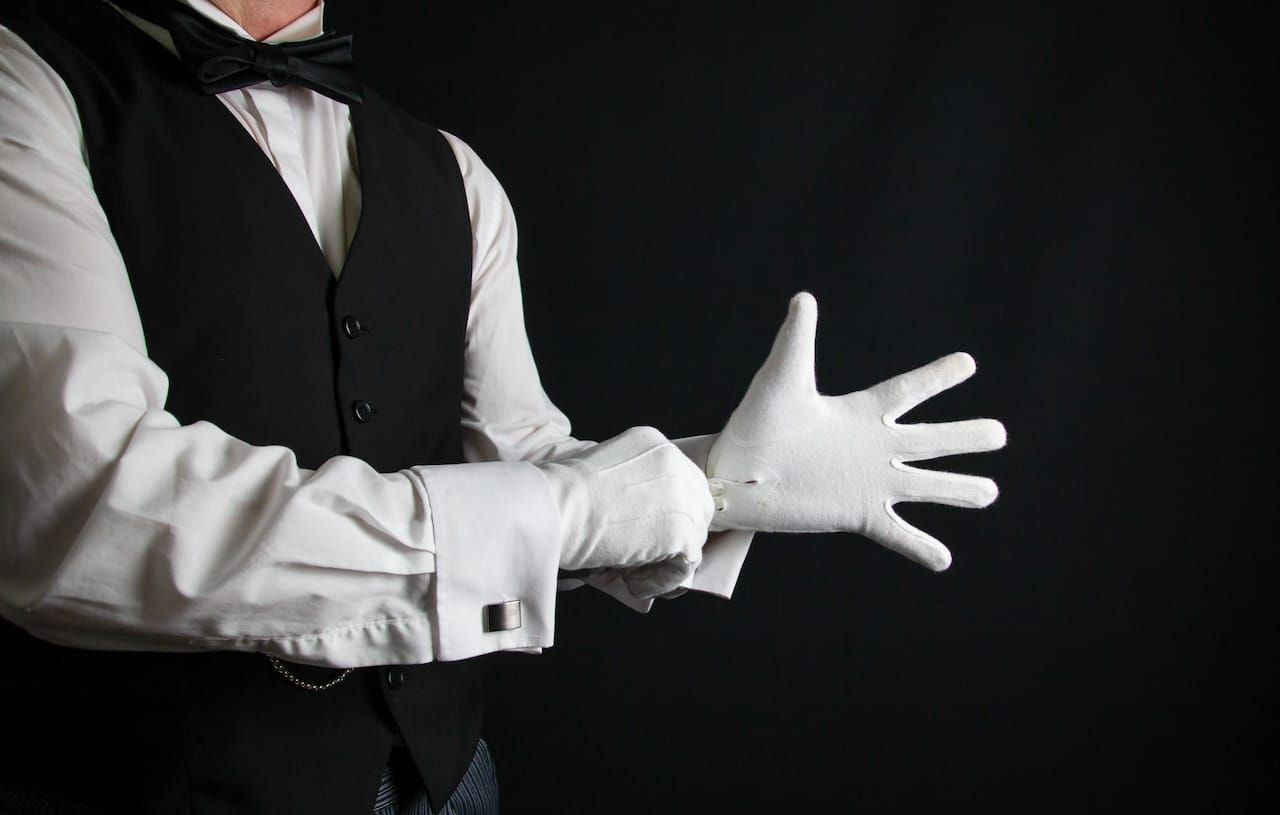
In some fine dining settings, Servers wear white gloves as an extra layer of sophistication, especially when serving wine or handling delicate dishes.
These gloves must be impeccably clean and well-fitted, projecting both hygiene and elegance.
Watch
A simple, classic watch is often acceptable and practical for keeping track of service timing.
Choosing one with a minimalist design and a black or silver band helps it blend seamlessly with the overall look without drawing too much attention.
Grooming Standards for Fine Dining Servers
A Fine Dining Server’s grooming reflects both personal respect and dedication to the restaurant’s high standards.
Personal hygiene is paramount, requiring regular bathing and the use of deodorant, while ensuring that clothing is clean and pressed.
Nails should be kept short and clean; if polished, a neutral shade is preferred to maintain a polished appearance.
Hair should be neat and styled appropriately, with long hair tied back in a bun or ponytail to prevent it from falling forward while serving.
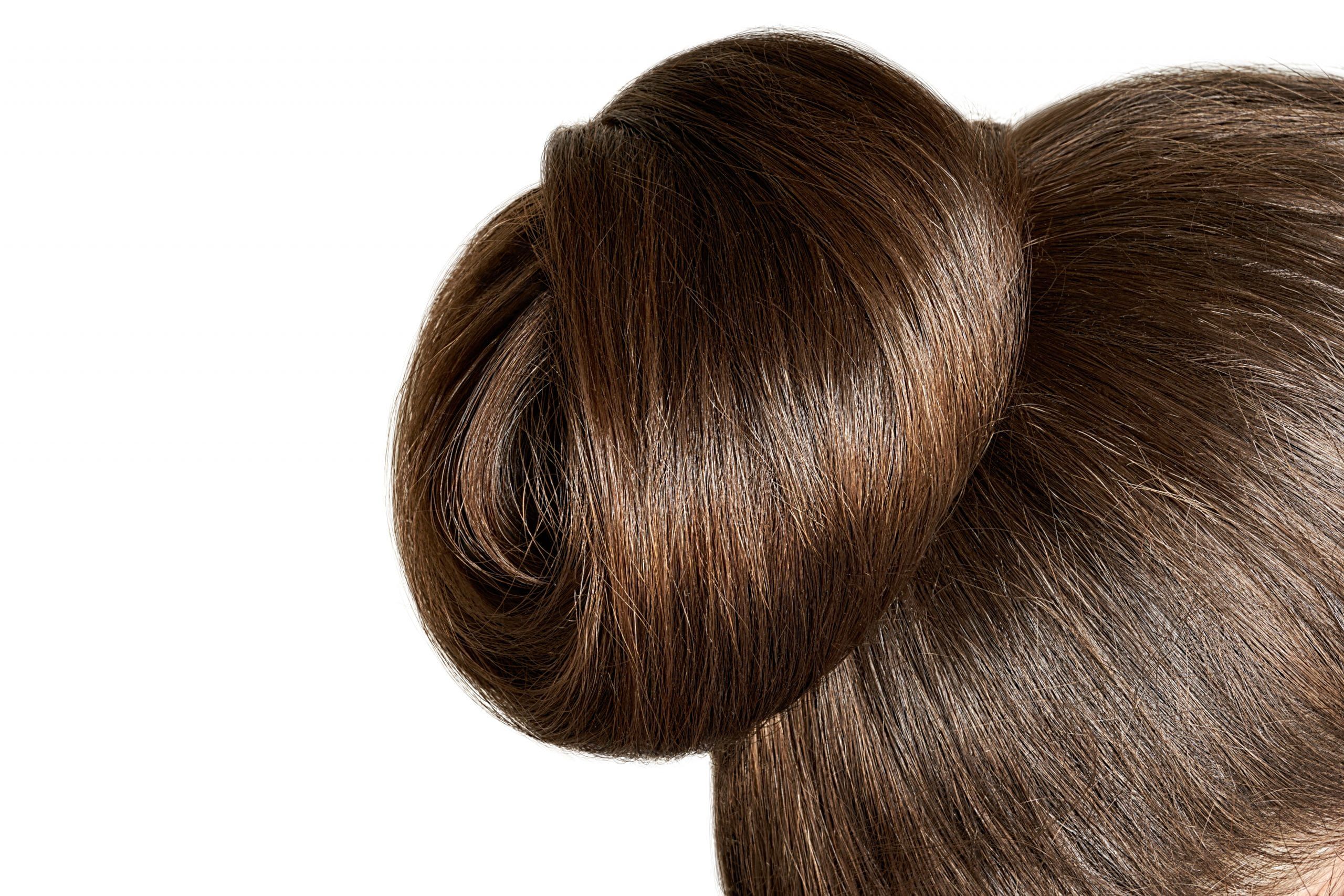
Additionally, men may be required to be clean-shaven or maintain a well-trimmed beard, aligning with the restaurant’s aesthetic.
See also: What Do Waiters/Waitresses Wear?
What To Avoid To Maintain a Polished Look as a Fine Dining Server
To achieve a consistent and subtle look, certain choices are best left out in fine dining environments. These include:
- Visible tattoos and piercings: While these are acceptable in more casual settings, fine dining establishments often require visible tattoos and piercings to be covered or removed to maintain a timeless, elegant appearance.
- Strong makeup: Heavy or overly dramatic makeup can distract from the dining experience, so opting for a more natural look is advisable.
- Flashy jewelry: Jewelry should be kept to a minimum because overly flashy accessories can detract from the uniform’s understated elegance. Instead, consider simple pieces like stud earrings, a plain wedding band or a discreet bracelet.
- Strong fragrances: Bold perfumes and colognes can clash with the aromas of food and wine, so a light scent or no scent at all is most preferable.
- Improper posture: Good posture reflects professionalism, so Servers should avoid slouching or leaning while on duty.
When in doubt about whether something fits the Fine Dining Server dress code at your workplace, ask your manager or supervisor.
Tips for Writing a Fine Dining Server Dress Code Policy
For Restaurant Managers, a well-defined dress code policy for Fine Dining Servers can set clear expectations and avoid misunderstandings.
Below are some points to keep in mind when writing or updating guidelines.
- Detail each clothing item: Enumerate which items are acceptable, like white shirts, dress pants, vests and ties and ties. Specify the appropriate colors, fits and lengths for each.
- Outline footwear guidelines: Besides mentioning which shoe types are allowed, highlight the importance of non-slip shoes to ensure safety.
- Clarify jewelry and accessories rules: Indicate the type of jewelry and accessories permitted.
- Establish tattoo and piercing policies: Include any specific requirements for covering visible tattoos and removing piercings.
- Set grooming expectations: Define acceptable standards for hygiene, hair and nails. For instance, do male Servers’ haircuts need to follow a certain length?
- Add visual examples: For extra measure, consider including images showing examples of both dos and don’ts. This helps further reduce the chances of possible misunderstandings.
- Use positive, respectful language: Your Fine Dining Server dress code policy should be written in a way that emphasizes professionalism while ensuring inclusivity. Avoid language that may come across as discriminatory against employees who need special accommodations (e.g., persons with disabilities).
- Mention procedures that ensure adherence: Clearly state that the Restaurant Managers or Supervisors will check the adherence to the dress code before each shift. This helps hold everyone accountable and ensures all Servers look put together.










Loading comments...